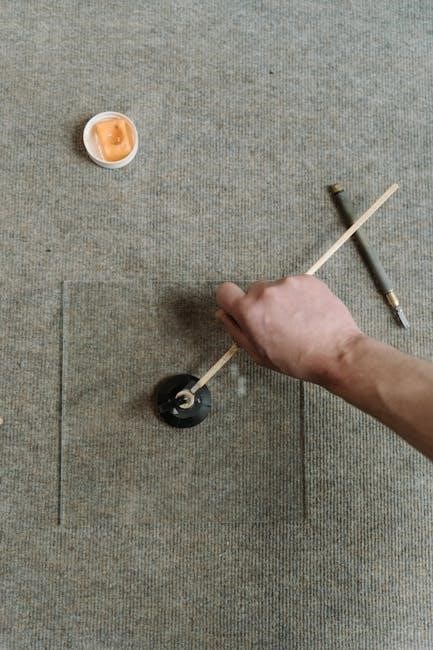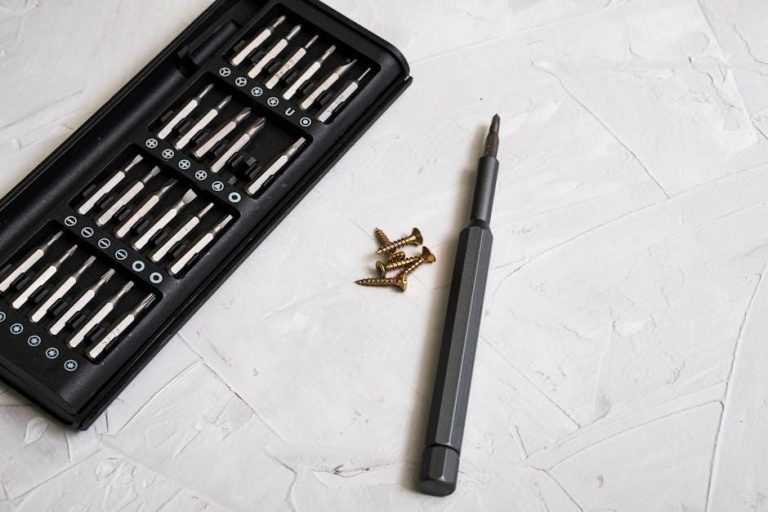Kebonnixs 12 Egg Incubator Manual: A Comprehensive Guide
Welcome to the comprehensive guide for your KEBONNIXS 12 Egg Incubator! This manual provides a step-by-step journey, ensuring a successful hatching experience; From initial setup to advanced customization, this guide covers all aspects of effectively using your incubator. Let’s begin exploring the path to successful hatching!
The KEBONNIXS 12 Egg Incubator is designed to bring the miracle of hatching into your home or classroom. It’s more than just a device; it’s an invitation to explore, learn, and witness the birth of life. Perfect for enthusiasts of all ages, this incubator offers an intuitive and energy-efficient experience.
This comprehensive guide will take you through every stage, from initial setup to hatching and beyond. Whether you’re a seasoned poultry enthusiast or a first-time user, you’ll find clear instructions and helpful tips to maximize your success. We’ll cover everything from temperature and humidity settings to troubleshooting common issues.
The KEBONNIXS 12 Egg Incubator is not just a tool; it’s an educational experience. It allows you to observe the fascinating process of embryonic development firsthand. This incubator makes learning about biology and life cycles engaging and accessible.
With its user-friendly design and reliable performance, the KEBONNIXS 12 Egg Incubator offers a seamless hatching experience. Get ready to embark on an exciting journey into the world of avian incubation!
Key Features and Product Dimensions
The KEBONNIXS 12 Egg Incubator boasts several key features designed to enhance your hatching experience. Its stable temperature control, driven by a strong circulating fan, ensures even temperature distribution throughout the incubator. This consistent environment is crucial for successful embryo development and optimal hatch rates. The incubator also includes an automatic egg turner, which gently rotates the eggs at regular intervals, mimicking natural incubation and preventing the embryo from sticking to the shell.
Another notable feature is the humidity display, allowing you to easily monitor and maintain the ideal humidity level for your specific eggs. This is vital for preventing shrink-wrapping and ensuring proper hatching. The built-in egg candler enables you to check the viability of your eggs throughout the incubation process, allowing you to identify and remove infertile eggs early on.
In terms of product dimensions, the KEBONNIXS 12 Egg Incubator measures approximately 11.4 x 10.2 x 6.7 inches and weighs around 3.68 pounds. Its compact size makes it suitable for various spaces, while its lightweight design allows for easy portability. The model number is KDI-12, and it is manufactured by KEBONNIXS.
Safety Instructions and Precautions
Before operating the KEBONNIXS 12 Egg Incubator, it is crucial to carefully read and understand all safety instructions and precautions outlined in this manual. Ensure the power adapter is properly installed and in good condition to prevent electrical hazards. Never operate the incubator with a damaged power cord or plug. Always connect the incubator to a grounded outlet to minimize the risk of electric shock.
Keep the incubator away from water and other liquids to avoid electrical damage. Do not immerse the incubator in water or any other liquid for cleaning purposes. Always unplug the incubator before cleaning or performing any maintenance. Ensure adequate ventilation around the incubator to prevent overheating. Do not place the incubator in direct sunlight or near heat sources.
Regularly inspect the incubator for any signs of damage or wear and tear. If you notice any issues, discontinue use and contact customer support. Keep the incubator out of reach of children to prevent accidental injury or damage. Never attempt to modify or disassemble the incubator, as this could void the warranty and create a safety hazard. Always supervise children when they are near the incubator.
Initial Setup and Installation Guide
Begin by unboxing your KEBONNIXS 12 Egg Incubator and carefully inspect all components for any damage during shipping. Ensure you have all the necessary parts, including the incubator base, egg trays, humidity sponge, power adapter, and instruction manual. Select a stable, level surface in a well-ventilated area, away from direct sunlight and extreme temperatures, to place your incubator.
Clean the incubator with a soft, damp cloth to remove any dust or debris. Avoid using harsh chemicals or abrasive cleaners. Connect the power adapter to the incubator and plug it into a grounded electrical outlet. Ensure the connection is secure. Familiarize yourself with the control panel and its functions, including the temperature and humidity settings.
Fill the water channels or humidity sponge with distilled water to the appropriate level, as indicated in the manual. This will help maintain the correct humidity levels inside the incubator. Place the egg trays inside the incubator. Before placing your eggs, allow the incubator to run for a few hours to stabilize the temperature and humidity. Monitor the readings to ensure they are within the recommended range for your specific type of eggs.
Operating Instructions: Setting Temperature and Humidity
Once your KEBONNIXS 12 Egg Incubator is set up, you’ll need to configure the temperature and humidity for optimal hatching. Begin by consulting the specific incubation requirements for the type of eggs you are hatching, as temperature and humidity levels vary depending on the species.
To adjust the temperature, use the control panel. Press the “Set” button, then use the up and down arrows to reach your desired temperature. The recommended temperature is typically around 99;5°F (37.5°C), but always refer to your specific egg requirements. Once set, the incubator will automatically work to maintain this temperature.
Humidity is equally crucial. The KEBONNIXS 12 uses water to maintain humidity. Ensure the water channels are filled. Monitor the humidity level displayed on the control panel. If the humidity is too low, add more water. If it’s too high, reduce the amount of water. A hygrometer placed inside the incubator can provide an accurate reading, confirming the display. Regularly check and adjust these settings. Remember, stable conditions are critical for successful incubation!
Egg Turning Mechanism and Functionality
The KEBONNIXS 12 Egg Incubator features an automatic egg turning mechanism, which is vital for successful embryo development. This mechanism mimics the natural turning of eggs by a mother bird, preventing the yolk from sticking to the side of the shell and ensuring even temperature distribution.
The turning mechanism typically consists of a roller system that gently rotates the eggs at set intervals. To ensure correct functionality, verify that the roller system is properly installed and the eggs are securely placed within the rollers. Observe the mechanism during its initial cycles to confirm that the eggs are turning smoothly and consistently.
The KEBONNIXS 12 may also have a test run function for the egg turning. Utilize this to check that everything is correctly aligned. The egg turner will auto-stop turning for the last 3 days before hatch to avoid excess turning to eggs. This prepares them for hatching. Inconsistent or non-functional turning can significantly reduce hatch rates, so regular monitoring is essential for a successful incubation.
Troubleshooting Common Issues
Encountering issues with your KEBONNIXS 12 Egg Incubator? Here are some common problems and their solutions. Firstly, if the incubator isn’t heating, ensure the power adapter is securely connected to both the incubator and the power source. Check that the power outlet is functioning correctly. If the temperature is off by several degrees, verify the thermometer’s accuracy by comparing it with another reliable thermometer.
For humidity problems, ensure the water reservoir is filled appropriately. If humidity is too low, add more water. If it’s too high, reduce the water level and ensure proper ventilation. Alarms can be triggered by temperature fluctuations. A low-temperature alarm may sound during the initial heating period; this is normal and can be disabled by pressing the MENU button.
If the egg turning mechanism isn’t working, check for any obstructions and confirm that the rollers are correctly installed. If problems persist, consult the manual for detailed troubleshooting steps or contact customer support for assistance; Regular checks can help prevent issues.
Maintenance and Cleaning Procedures
Maintaining your KEBONNIXS 12 Egg Incubator is crucial for optimal performance and hygiene. Before cleaning, always disconnect the incubator from the power source to prevent electrical shock. Regularly wipe down the interior surfaces with a soft, damp cloth to remove any debris or egg residue. Avoid using harsh chemicals or abrasive cleaners, as they can damage the incubator’s components.
The water reservoir should be cleaned frequently to prevent the build-up of bacteria and algae. Empty the reservoir and wash it with warm, soapy water, rinsing thoroughly before refilling. The egg tray and rollers should also be cleaned regularly to ensure smooth operation and prevent contamination. Remove any hatched eggshells or unhatched eggs promptly to maintain a clean environment.
Periodically inspect the fan and vents for dust accumulation. Gently clean these areas with a soft brush or vacuum cleaner to maintain proper airflow. Proper maintenance ensures the longevity and efficiency of your incubator, contributing to successful and healthy hatches.
Advanced User Settings and Customization
The KEBONNIXS 12 Egg Incubator offers advanced settings for experienced users seeking to optimize their hatching process. While the default settings are suitable for most poultry eggs, you can fine-tune parameters to match the specific needs of different species.
Temperature calibration is a key feature for advanced users. If you notice discrepancies between the incubator’s display and an external thermometer, you can adjust the temperature setting to ensure accuracy. Humidity control can also be customized. By carefully monitoring humidity levels, you can create the ideal environment for optimal egg development.
Furthermore, the egg turning interval can be adjusted based on the species being incubated. Some users may also want to adjust the alarm settings, such as the temperature threshold for alerts. Remember to consult species-specific incubation guidelines before making any adjustments to ensure successful hatching. These advanced features provide flexibility for hobbyists and breeders.
Hatching Process and Post-Hatch Care
As the incubation period nears its end, the hatching process begins. It is crucial to stop the automatic egg turner three days before the expected hatch date to prevent excess turning. Maintain stable temperature and humidity levels during this critical phase. Observe the eggs closely for signs of pipping, where the chick begins to break through the shell.
Once the chicks hatch, allow them to dry completely inside the incubator. This usually takes several hours. Provide access to fresh water and chick starter feed immediately after transferring them to a brooder. Maintain a warm brooder temperature, gradually decreasing it as the chicks grow. Observe the chicks for any signs of illness or distress.
Ensure the brooder is clean and well-ventilated. Proper post-hatch care is essential for healthy chick development. Regular monitoring and timely intervention will help ensure a thriving flock. Enjoy the rewarding experience of raising your newly hatched chicks!



